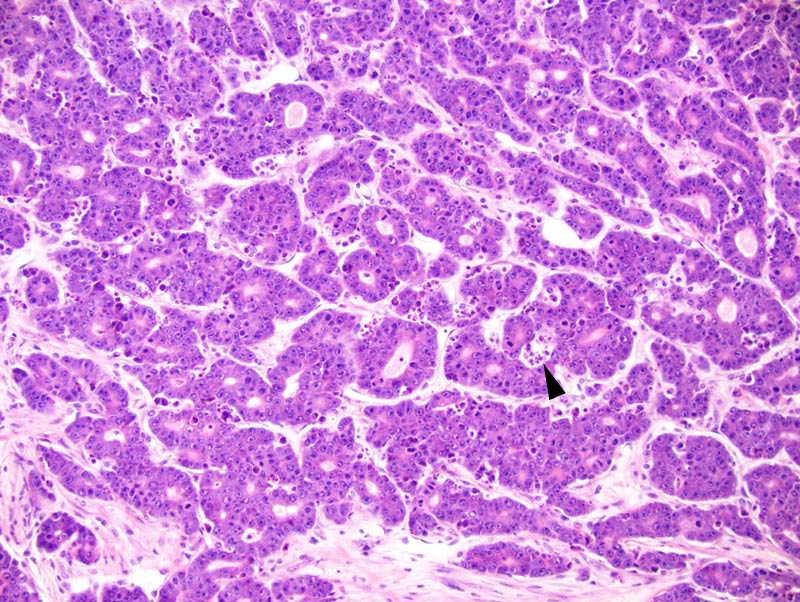Pathology Image Detail

Caption |
Glandular mammary adenocarcinoma: this photomicrograph illustrates a portion of the neoplasm where the glandular pattern is more prominent but also strat to form solid areas. The formation of solid areas is characterized by neoplastic cells that often pile-up disorderly and form a few nests. A moderate number of neoplastic cells undergo single cell necrosis. Cavitation at the center of some neoplastic lobules generally is the result of lumen formation but is also sometimes the result of necrosis occuring at the center of neoplastic nests (arrowhead). |
Description |
Adenocarcinoma, glandular, mammary gland |
Age at Necropsy |
338 days |
Contributor |
Churchill GA (J:112750) |
Pathologist |
Mikaelian I (J:94320) |
Method |
H&E |
Model |
|
Strain |
|